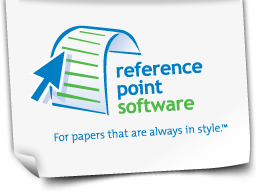4 Brainstorming Methods for Writing Better College Papers
Have you ever received a writing assignment from your instructor thatΓÇÖs left you wishing for a lightning strike of inspiration to energize your creativity and focus your ideas? This can happen whether youΓÇÖre a freshman writer or a senior scribe. Every student during their college career has to write papers that they struggle with for various reasons, from an initial lack of interest, knowledge or understand of an assignment, to other outside influences that can drain their energy and attention.
Whether your brain is blank or on information overload, here are four brainstorming methods proven to help expand your knowledge and organize your ideas for your topic before writing your first draft.
1. Free Writing
Freewriting is a warm-up exercise that gets the creative juices flowing and clears out the cobwebs. When you free write, set a limit; say 15 to 30 minutes or a certain number of pages of notes. Whatever boundaries you set, make sure you get uninterrupted time to let your ideas flow. DonΓÇÖt try to edit your thoughts as they come to you and donΓÇÖt worry about proper grammar, spelling, or punctuation. Save the editing for later. When you free write, you want to eliminate your internal critique. Keep writing even if you feel that you donΓÇÖt have anything important to say.
Once youΓÇÖve reached your limit, go back and read over your notes. Some of it may read like gibberish, but other thoughts will come to the forefront as gems. Highlight them or copy them onto a new separate sheet of paper. Even if you donΓÇÖt find anything of quality from your first session of freewriting, you will likely have cleared up your writerΓÇÖs block.
2. Mind Mapping
This is one of the favorite brainstorming methods for students who are visually inclined. When you do mind mapping, put your central idea or thesis in the center of a page. You can include codes, images, symbols, and keywords representing the supporting ideas you have for your thesis. Draw lines from your central idea out to your supporting images and keywords in the hierarchy of how you think you will use them in your paper. For example, some images or keywords may be primary supporting themes, while others may substantiate your supporting ideas. Using different colors and emphasis on line thickness or font size can help you visually grasp your hierarchy, too. As a visual thinker, you can create graphs, charts, or tables as alternatives, also.
3. Cubing
Cubing is a brainstorming method that forces you to look at a topic from six different sides, each requiring you to take a different perspective. Consider your topic from these angles:
- Describe it.
- Associate it.
- Compare it.
- Apply it.
- Analyze it.
- Argue for or against it.
Just as with freewriting, cubing works best if you set a time limit for each of the six angles you explore. Once youΓÇÖre done cubing your college paper topic, review what youΓÇÖve written. Do you notice any patterns? Do you see any relationship between the sides? Do you have a new perspective you want to include in your paper? Does one side energize your writing more than the others? At the very least, cubing should give youΓÇÖre a more well-rounded understanding of your topic before you begin writing.
4. Read More
When all else fails, read more. It can limber up your mind so you can wrap it around how you want to address your thesis. Your thoughts will stretch as you take in new data, different perspectives, and various approaches other writers use for delineating their viewpoints. As with the previously mentioned methods, you need to set a time limit. Once you reach your time limit, you can go back and apply your expanded knowledge to the other brainstorming methods that you feel are most helpful to you.
While youΓÇÖre reading, you will likely identify new relevant sources to use in your paper. Make sure you take notes so you can cite them accurately. If youΓÇÖre unsure of the latest guidelines for citing references to your assigned formatting style, consider using formatting software so you can focus your time on the quality of your content.
For more information about APA or MLA formats, contact us today.
David Plaut is the founder of Reference Point Software (RPS). RPS offers a complete suite of easy-to-use formatting template products featuring MLA and APA style templates, freeing up time to focus on substance while ensuring formatting accuracy. 
Reference Point Software is not associated with, endorsed by, or affiliated with the American Psychological Association (APA) or with the Modern Language Association (MLA).
